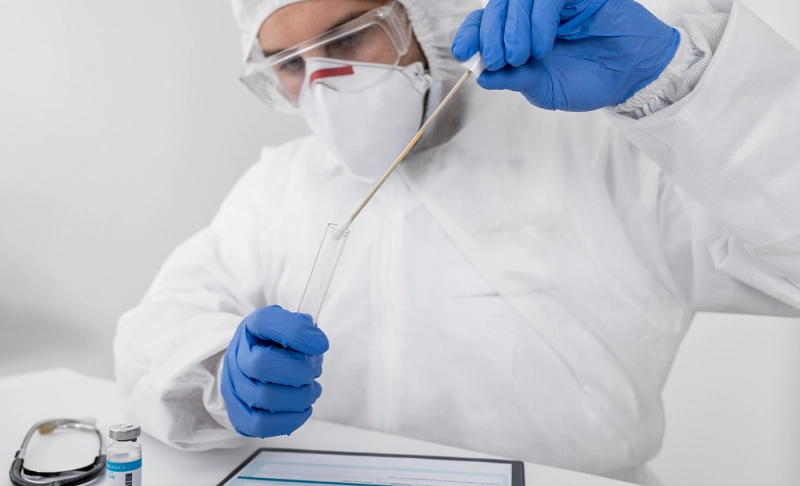By: Rachel Muller-Heyndyk
May 19 2021
False: The U.S. physician Dr. Stanley Plotkin used hundreds of aborted human fetuses to develop the COVID-19 vaccine.

The Verdict False
Fetal cell lines are used in the study of viruses and vaccines, but these are not the same as fetal tissue.
Fetal cell lines are used in the study of viruses and vaccines, but these are not the same as fetal tissue. A video clip of an interview with Dr. Stanley Plotkin, a U.S. physician and vaccine consultant, is circulating on social media. Plotkin has worked on the development of vaccines for rubella, polio, rabies, and anthrax, and has advised pharmaceutical companies on the COVID-19 vaccine. On Twitter, a caption of the video translated from Turkish reads: "Dr. Stanley Plotkin: I used hundreds of human fetuses in vaccines." Not only was the video recorded in 2008, long before the start of the outbreak of the COVID-19 in late 2020, but Plotkin's words have been taken out of context. While aborted fetal tissue was used in the study of viruses in limited circumstances in the 1950s and 60s, medical research has since evolved to allow physicians and biologists to grow and replicate fetal tissue cell lines in laboratories from the original tissues. While these fetal cell lines are used to study viruses in order to develop a vaccine, vaccines themselves do not contain these cells. In the video clip in question, Plotkin is presented with the details of a study that he co-authored during his time at the Wistar Institute of Anatomy and Biology in the 1950s and 60s. The interviewer asks Plotkin about "76 aborted fetuses" which were used to develop vaccines. He is asked if he harvested organs from the fetuses, to which he responds: "I personally did not harvest any. But a whole range of tissues were harvested by co-workers." He says he is not sure how many aborted fetuses may have been used to study the development of vaccines throughout his career. Plotkin and his colleagues had originally considered using animal cells but realized there was a risk of contamination, and that fetal cells were less likely to have been exposed to viruses. Fetal fibroblast cells were first developed in the 1960s, and are still used today, meaning that no new sources of cell tissue are required. Vaccines for varicella, hepatitis A, rubella, rabies, and one U.S. approved version of the COVID-19 vaccine use fetal fibroblast cells. The Johnson & Johnson (J&J) vaccine uses fetal retinal cells. These retinal cells used to make the COVID-19 adenovirus vaccine (J&J/Janssen) were extracted from a terminated fetus in 1985 and used in vaccines in the late 1990s. Again, there has been no need to use tissues from any new sources since. In a separate video, Plotkin said that there was a high level of opposition to the use of fetal cell lines for the rubella vaccine, but that the Roman Catholic Church and other religious groups eventually agreed that there was not an ethical problem with using fetal cell lines. He said that the Pontifical Academy for Life had been one of the main opponents. The academy was then headed by Cardinal Joseph Ratzinger, who later became Pope Benedict XVI. Ratzinger eventually cleared the use of vaccines with parishioners: "Their consensus view is that as the cells were not derived specifically to develop the vaccine, and in as much as one is not doing new abortions for every vaccine lot, one is going back to the cells, one is going back to cells that were frozen back in the early 1960s, so that no immoral act is taking place according to these theologians." It is incorrect to state that fetal tissue was used in the development of vaccines. Vaccines do not contain any traces of fetal cells, and research into vaccines uses fetal cell lines derived from fetal tissue from the 1960s, 80s, ad 90s. The COVID-19 pandemic has given rise to a lot of potentially dangerous misinformation. For reliable advice on COVID-19 including symptoms, prevention and available treatment, please refer to the World Health Organisation or your national healthcare authority.


